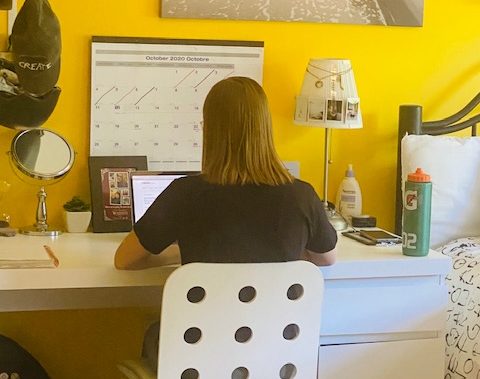As parents we know that our children learn in their own way, and in their own time. Different teaching methods work differently with each child, even within the same family.
Back in the early days, education used to be delivered in a one room classroom, with all ages and stages expected to pay attention, perform, and succeed at relatively the same pace. As urban centres grew, classes were split down the lines of age, resulting in grades.
When I went to school in the 60s and 70s, the classes were not only split by grades, there were some kids who would be placed in an accelerated or “gifted” class. Quite a few children “skipped” grades (as I did, moving from Grade 1 straight to Grade 3. I peaked early.)
In 2020, with Covid disrupting all of our plans, our kids are having to learn more and more independently, as all parents are evaluating the best way to move forward for our children’s education, not just during the pandemic, but also considering the far-reaching effects.
According to a recent Leger research poll, 74% of Canadian parents are concerned about the impact of Covid on the continuity of learning for their kids. Rightfully so.
But there are some positives that can come out of the mandatory e-learning model that many students are now facing.
It’s not surprising that 80% of parents surveyed agree that it is important for kids to graduate with digital skills. Our kids are learning digital skills at a rapid pace. Parents also mostly agree that their kids will require a high level of digital and technological skills to be competitive in the labour market, in many career choices.
Of course our kids didn’t come in to e-learning cold. 60% of those surveyed agree that their children already had the digital and technological skills to learn online prior to the pandemic.
They are having to learn to be flexible – not all technology works perfectly every time. Schedules change, deadlines change, teaching methods change. Independent learning will become more important and kids are expected to work distanced from others, physically. On the positive side, it will allow them to learn at their own pace on their own schedule, which will likely become the “new normal” in years to come.
Naturally there are negatives to all of this. Screen time, screen burn out, social isolation, and the effectiveness of the actual programming have to be taken into consideration when dealing with the overall health and learning of our kids. Making sure they are engaging in physical activity, socially distanced events and being outdoors will become paramount to balance the time spent indoors in front of a screen.
There’s also a concern that many students are being taught by educators who are working their way up the online teaching curve themselves. Parents may want to look into private online educational resources as a way to balance out any deficits in this area as their kids enter high school and start to plan for their post secondary studies. This is important to consider as 67% of us think that using e-learning to deliver education to Canadian students will continue to be used even when the pandemic is over.
For many parents, e-learning is not something that we are familiar with ourselves. In fact, only 44% of parents say they are familiar with e-learning for their kids. If time and resources allow, it might be a good idea for us to consider taking an online course of interest ourselves, to help understand the process, and learn something at the same time.
E-learning is here to stay. Let’s all get educated, together.
As always, opinions expressed in this post are my own. I am working in partnership with OVS, The research was commissioned by them and executed by Leger; PROOF:eLEARNING, COVID-19 Omni; Week of May 8-11,2020.
Links:
OVS (Ontario Virtual Schools) has been around for over 10 years, with experience in tailoring classes for online environments so that students can feel engaged by the digital delivery and immersed by the content (i.e. in-lesson quizzes, illustrative videos, interactive infographics). Parents can sign on to take selected courses free of charge to help experience online learning. (For a limited time enter the code eLearning200 for $200 off a semesters load of courses (3 or 4 courses).









1 Comment
you expressed it really well!